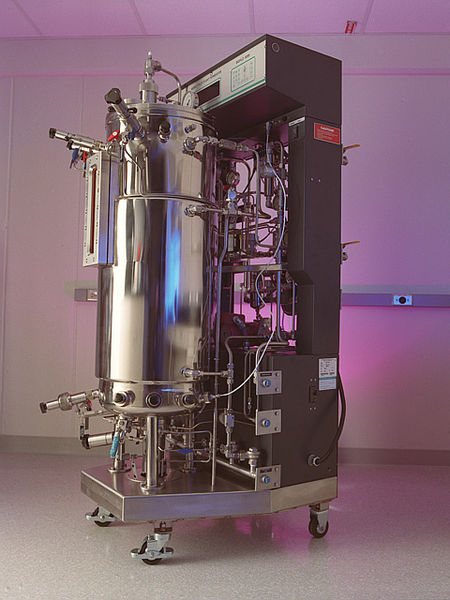Mark Peplow - The next couple of months could be a real make or break time for a new form  of biofuel that's been promised for years, but it's only now, starting to reach the market in meaningful amounts. Biofuels are meant to cut climate changing carbon dioxide emissions by replacing petrol in our cars. As the plants grow, they suck up carbon dioxide from and atmosphere. So, if you turn the crop into a fuel it shouldn't in theory emit any extra carbon dioxide.
of biofuel that's been promised for years, but it's only now, starting to reach the market in meaningful amounts. Biofuels are meant to cut climate changing carbon dioxide emissions by replacing petrol in our cars. As the plants grow, they suck up carbon dioxide from and atmosphere. So, if you turn the crop into a fuel it shouldn't in theory emit any extra carbon dioxide.
Now, the most used biofuel is ethanol. In the US, it's made by fermenting sugars in maize with yeast to make the ethanol, just like brewing beer. But this form of ethanol actually offers pretty modest savings in greenhouse gas emissions and growing so much of it actually raises food prices. So, people have been trying to brew ethanol from agricultural waste instead. There's a lot more leaves and stems. They don't use up any extra farmland and these second generation fuels potentially offer much better carbon dioxide savings.
Dave Ansell - So, if this is so much better. Why aren't we using them already?
Mark - Well, it's been very, very difficult to actually break down the agricultural waste. They contain tough molecules like cellulose and it's taken more than a decade of intensive research to get this process working at a commercial scale. But within the next few months, three big cellulosic ethanol plants are set to come online in the US. So, you would think all is looking rosy, but...
Dave - I'm sensing a 'but' there.
Mark - Yeah, there is a 'but'. Just as cellulosic ethanol is making its commercial debut, it turns out there's actually no market demand for it. The US government programmes to boost biofuel consumption have been so successful that corn ethanol now fulfils the entire need for the US motor fleet which mostly burns 10% ethanol, 90% petrol blend which is called the E10. This factor has been called the blend wall. Even worse, the Environmental Protection Agency is about to pull the rug out from under the cellulosic ethanol producers. It's about to change the rules so that blenders aren't forced to use quite as much of this stuff in their petrol blend that they sell on the forecourts. And producers fear that this is going to leave them with an excess of unsold cellulosic ethanol that they say could cripple their business.
Dave - So, this is basically about politics and economics, and it just isn't going to work unless somehow that's sorted out.
Mark - That's right and there's a couple of ways around this. Exporting the extra ethanol, that's expensive to ship it all the way over to Europe. You could persuade US drivers to use richer ethanol blends maybe in their cars. The cars will run on them, but some people are worried by oil industry funded studies saying it will damage their engines. And to be fair, richer ethanol blends have less energy than straight petrol. So, a tank full just won't take you as far. As a result, science - chemistry in particular - might actually come to the rescue in this problem because with chemical catalysts and high temperature and pressure, you can convert cheaper feedstocks like municipal solid waste - the stuff that we throw away in our bins - directly into petrol which can be dropped straight into the fuel supply. So, you don't have this blend wall problem that ethanol faces and a commercial plant doing the front end of this process is about to come online in Canada in the summer.
- Previous Black Box Recorders
- Next Cuckoo chicks earn their keep










Comments
Add a comment